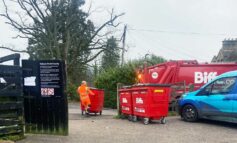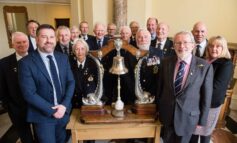One of Bath’s controversial ‘liveable neighbourhood’ schemes went before councillors on Monday for scrutiny, with opponents holding a protest outside the Guildhall before the meeting.
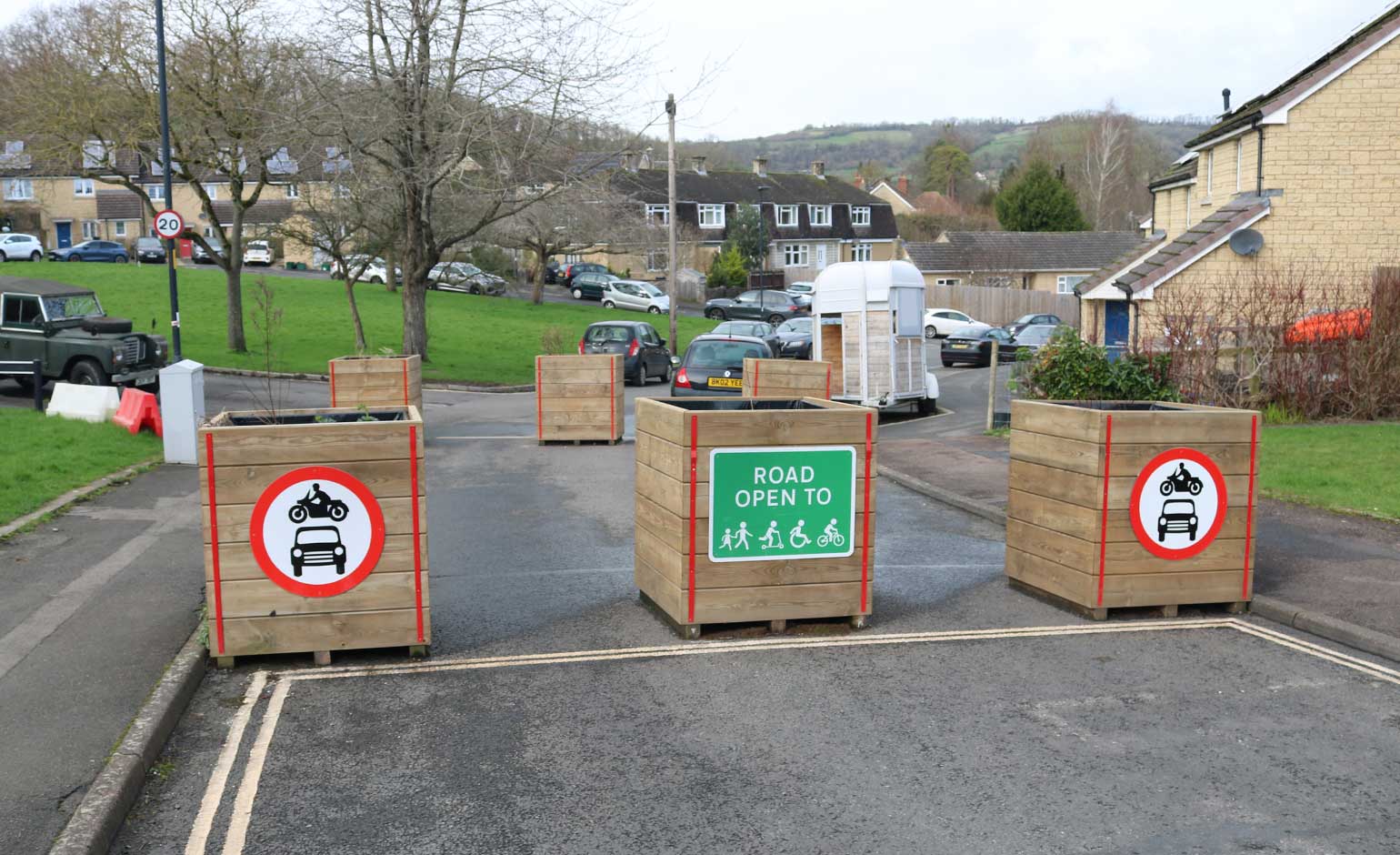
The planters at Southlands | Photo © Bath Echo
Eleven opposition councillors on Lib Dem-controlled Bath & North East Somerset Council had signed a ‘call-in’ over the decision to make the traffic restriction at Southlands in Weston permanent.
The climate emergency and sustainability scrutiny panel heard from several locals, mainly opposed to the scheme.
Although it had no power to overrule the decision to make the scheme permanent, the panel could have made recommendations to decision-maker Cllr Manda Rigby.
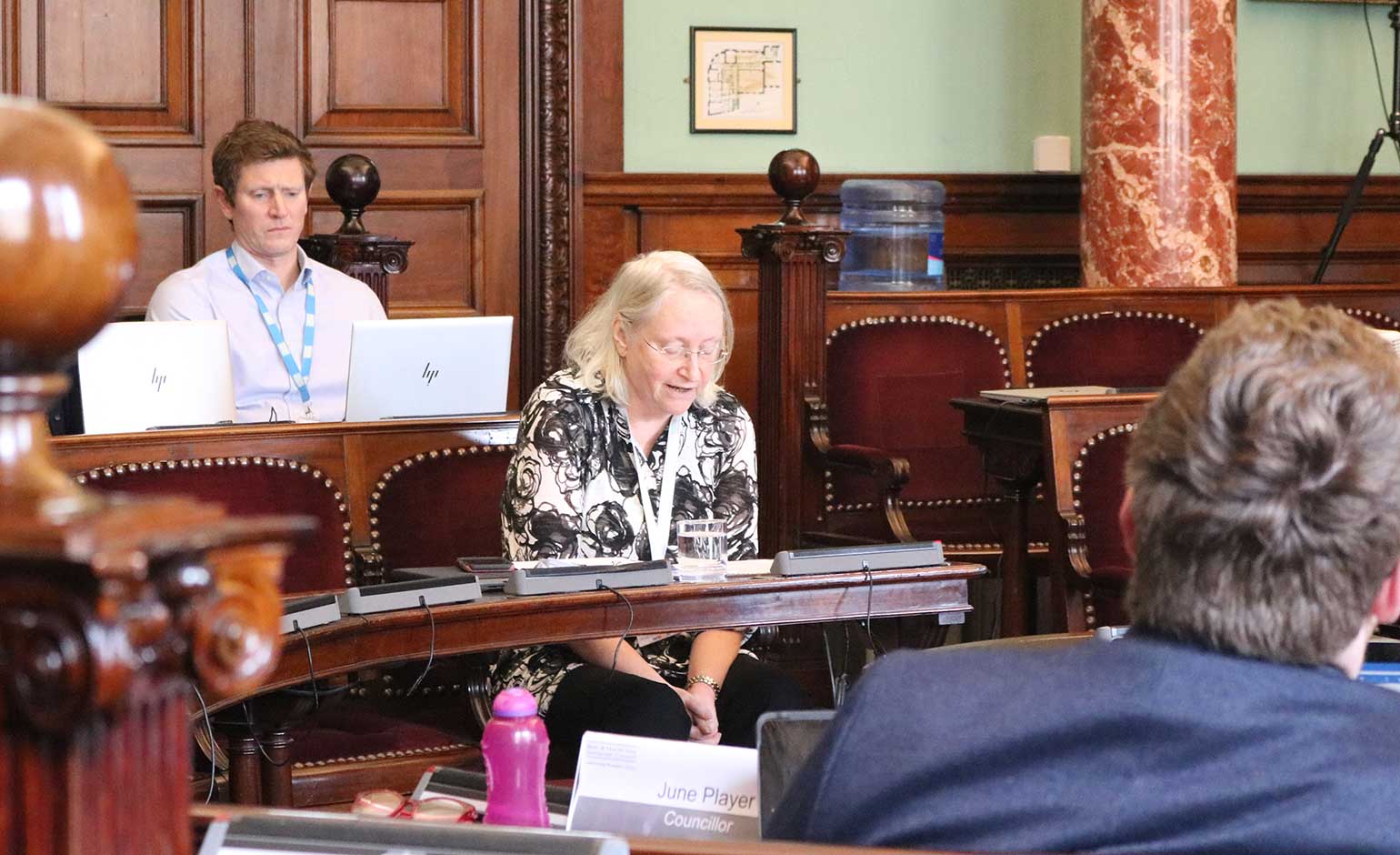
Cllr Manda Rigby speaking during the meeting | Photo © Bath Echo
Instead, the members rejected the call-in by seven votes to one.
The through-traffic restriction on Southlands was one of three liveable neighbourhoods launched on a trial in November 2022. The two other trials – Church Road in Widcombe and at Queen Charlton – will also be made permanent.
Meanwhile, five new trials are planned. While some in Bath have welcomed the new schemes, others have also proved controversial.
People in the Sion Hill area have warned that a plan to close Winifred’s Lane to through traffic would push traffic down roads past children’s schools, while a petition against closing Sydney Road to through traffic has amassed more than 3,500 signatures.
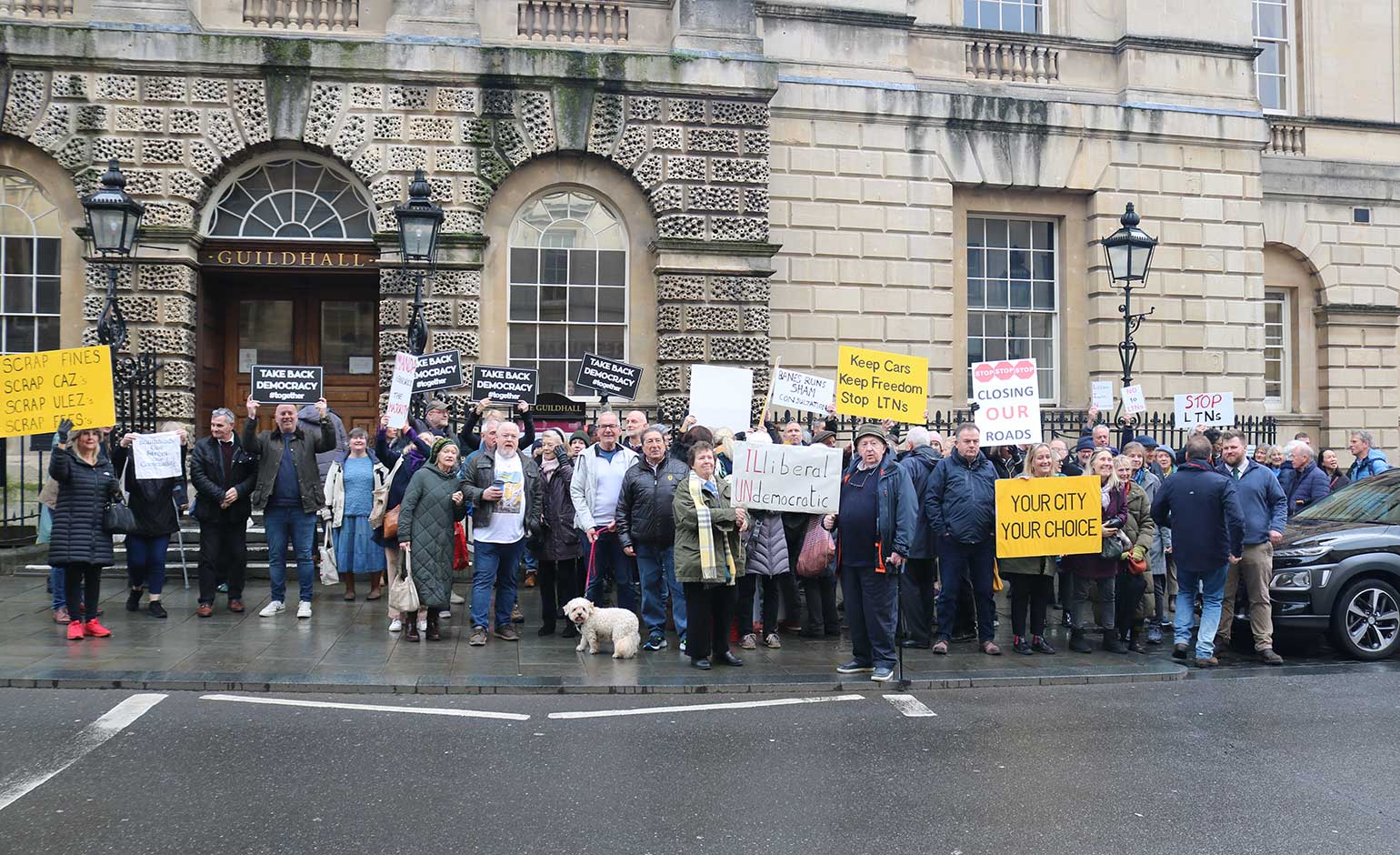
Protestors outside the Guildhall | Photo © Bath Echo
Peter Heywood, a resident of Weston Village and chair of local community group Future Weston, told Monday’s scrutiny meeting that local people had been told that the scheme at Southlands would go ahead, partly as it was the only way to get future funding from the West of England Combined Authority for more local infrastructure.
He said Southlands had never been perceived by local residents as a ‘rat run’ but has a parking problem, partly due to the nearby Royal United Hospital.
He explained: “The result of the modal filter has been to make parking worse on one side, with no effect on the other side. This has unfortunately caused the community to split into two – the rich end and the poor end.
“One side is overloaded with cars, many from outside the area, parking on the grass, blocking essential traffic, worse than ever, less liveable; the other side is protected, with the open green in the middle.
“When residents on either side have to drive to somewhere in the opposite direction, they have to loop twice along the High Street, there and back. So this inevitably does cause more traffic on the High Street.
“It is disingenuous to suggest that the modal filters have somehow in themselves reduced the traffic on the High Street.”
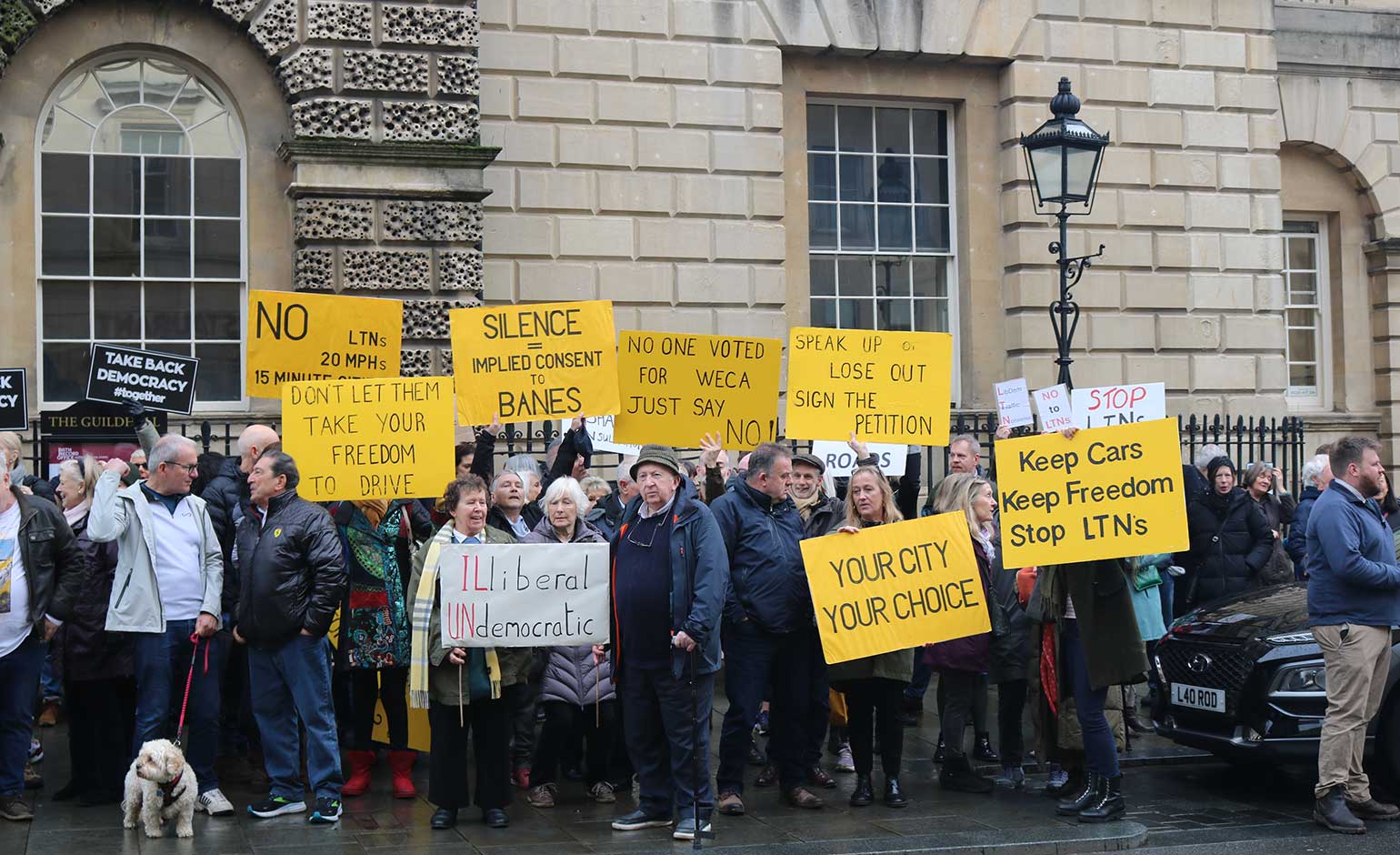
Protestors outside the Guildhall ahead of the meeting | Photo © Bath Echo
Another speaker, Mike Earle, accused the council of “invalidating” the residents’ lived experience by stating that traffic data collected did not support their views.
Meg Collin, who lives between the planters at Southlands, said she acknowledged the very real problems with parking on both sides and asked for permits to alleviate these pressures.
But she voiced her support for the low-traffic neighbourhood for promoting, enabling and encouraging active and public transport to help break down mobility inequalities.
Angie Paddock, a resident of Southlands for almost 12 years, said the two council surveys had shown 71% and 57% of residents were against the planters in Southlands but this had been ignored.
She said some residents had been invited to the consultations but not all. “In fact a lot of residents from Weston High Street and Southlands did not know of the consultation meeting. Only those that the planters would impact the greatest were notified of the consultation.
“During the consultation concerns were ignored, including issues of safety, turning point too small, HGVs, emergency vehicles, all unable to turn around, we now have large vehicles having to reverse down Southlands on to Penn Hill Road, or they try and use the small utility road to leave Southlands.”
Labour group leader Cllr Robin Moss (Westfield), who led the call-in, said there was a lack of public support for the scheme.
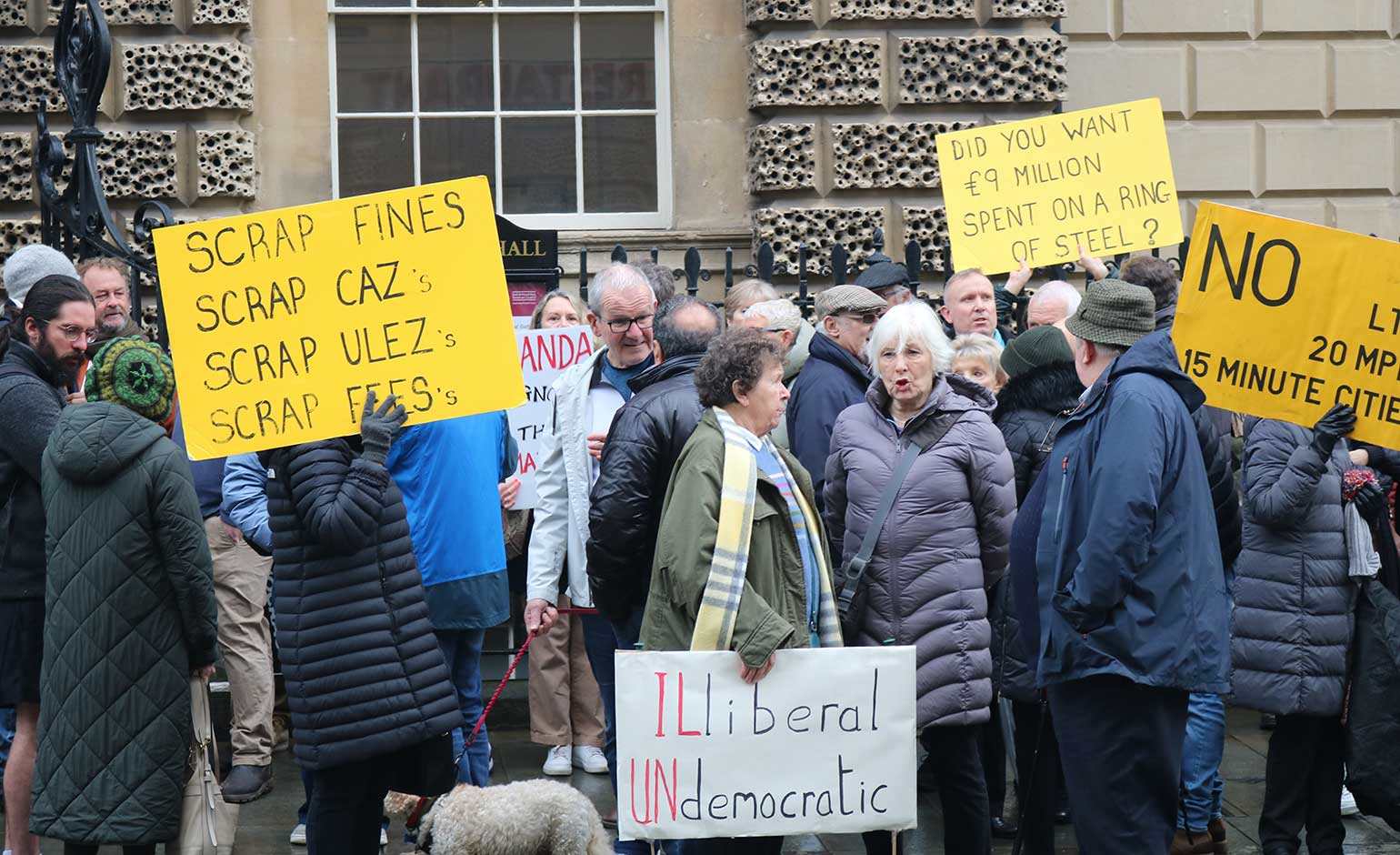
Some of those against the LTN schemes | Photo © Bath Echo
He told Cllr Rigby: “I hope you reconsider this particular decision, but much more importantly I hope we can have a conversation about the way that we can see traffic schemes in an overall traffic circulation, traffic management in Bath and North East Somerset.”
Councillor Rigby (Bathwick), the cabinet member for highways, said that she had read all the responses people had made but also had to base her decision on traffic and air quality monitoring data and the council’s policies and manifesto commitments.
She said: “The reasons people gave for opposing the scheme, such as fears of displacing traffic and worsened air pollution, are not backed by the evidence recorded.”
She said she completely agreed that the scheme had not addressed the parking issue at all but wasn’t designed to.
She added: “If this doesn’t go forward, we absolutely can’t do the crossings and the other things that people have asked for within the Weston community.”
Councillor Rigby said the council had spent the minimal amount possible on the Southlands scheme as it had been an experimental order. She said she had already briefed scheme engineers to make improvements, including changing the turning circle.
She said: “I am genuinely, genuinely saddened that the community has felt split in this way.
“That absolutely was not the intention and I think with the benefit of hindsight, perhaps doing it the other way round, addressing the parking issue before would not have split the community.”
She urged the panel to turn down this call-in saying she believed the council could work with the community to bring forward more interventions “to make those that are currently feeling very uncomfortable with this – and I absolutely hear and acknowledge what you are saying – more comfortable with”.
The ward’s two Lib Dem councillors are also divided over the issue. Councillor Ruth Malloy (Weston, Lib Dem) said she had to consider the views of people who were not vocal about the scheme, while councillor Malcolm Treby warned there was “no mandate” for the planters and called for the scheme to be removed if issues caused on the south-eastern side could not be fixed.
John Leach (Walcot, Lib Dem) argued that the “clear majority” was the people who had not responded to the consultation who it could be presumed were “broadly happy”.
Since Monday’s meeting, a petition has been set up calling on the West of England Mayor Dan Norris to force B&NES Council to produce an integrated, not divided plan for Bath.
Becky Feather & John Wimperis, Local Democracy Reporter

